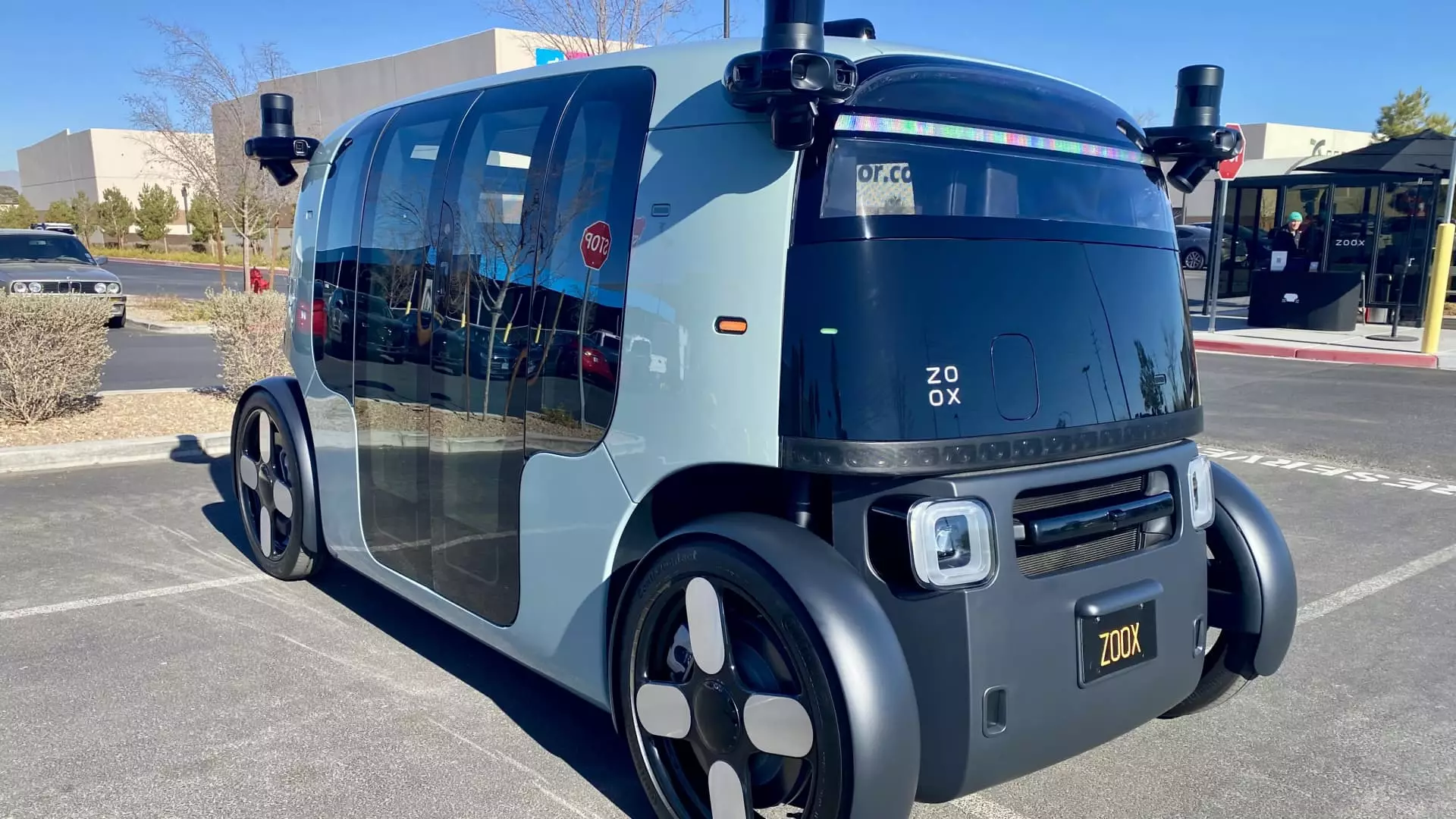The year 2023 represents a significant turning point for Zoox, Amazon’s ambitious endeavor in the realm of autonomous vehicles. With plans to enhance its operations and roll out a commercial robotaxi service, Zoox is striving to redefine urban transportation. Notably, co-founder and Chief Technology Officer Jesse Levinson expressed excitement about the company’s trajectory, emphasizing an imminent launch of public rides in cities such as Las Vegas—a testament to Zoox’s dedication to autonomous mobility. “That’s a lot of work, but we’re excited for that,” he noted, highlighting the challenge ahead.
Zoox’s transition towards public ridership occurs against a backdrop of dwindling enthusiasm for autonomous vehicle technology among investors. This decline is echoed in the automotive industry where companies like General Motors, Ford, and Volkswagen have shuttered their self-driving divisions in recent years. Yet, Zoox—acquired by Amazon for a staggering $1.3 billion in 2020—remains focused on its vision. By having developed robotaxis designed specifically for autonomous operation, Zoox diverges from competitors like Waymo, which adapted conventional vehicles for self-driving capabilities.
Central to Zoox’s strategy is the unique design and functionality of its autonomous vehicles. The absence of traditional driving controls—like steering wheels and pedals—highlights Zoox’s commitment to an innovative, purpose-built model tailored for riding rather than driving. The design has drawn mixed reactions; some characterizing the vehicle as a “box” or “toaster” underscores its departure from conventional automotive aesthetics. However, experts like Sam Abuelsamid regard the vehicle’s form factor as particularly interesting, indicating it fits well within the needs of modern transit solutions.
Currently, Zoox is piloting its fleet in several urban centers, including Las Vegas, San Francisco, and Foster City, California. Las Vegas stands out as a prime location for Zoox’s first commercial launch, where the company plans to introduce an “Early Rider Program” before broadening access to the public later this year. Speculation also looms about potential future markets, such as Miami and Austin, albeit without specific timelines.
Trial Runs and Real-World Testing
In practice, Zoox’s autonomous vehicle demonstrations have revealed a functional yet cautious system. During a recent test drive along Las Vegas Strip, the robotaxi navigated the streets competently, showcasing its ability to make calculated maneuvers. However, there were instances where the vehicle hesitated, opting to remain in a long line of traffic rather than maneuvering past obstacles—a behavior raising questions about its assertiveness in potentially complex driving scenarios.
Levinson elaborated on this nuance, pointing out the need for a balance between offensive and defensive driving strategies—a critical focus during the ongoing testing phase. As autonomous vehicles are bound by stricter adherence to traffic laws compared to human drivers, achieving this equilibrium is crucial for safety and, ultimately, public acceptance.
Despite notable advancements, Zoox faces industry-wide challenges in the commercialization of autonomous vehicles. The robotaxi sector has proven to be more intricate than many early enterprise projections suggested. While self-driving vehicles have shown potential, high operational costs and lengthy timelines to achieve profitability complicate matters.
Abuelsamid raises concerns regarding the viability of Zoox’s business model in this evolving landscape. He observes that as technology matures, the pressing question looms: what operational framework will sustain profit margins and operational costs associated with robotaxi services? Notably, competitors like Waymo have continuously expanded their service offerings, dominating the market and forging partnerships to ensure presence in key urban areas—a wake-up call for Zoox.
The industry has learned that while strides have been made, expectations around the speed of commercial adoption need recalibrating. Companies such as GM and Waymo, once frontrunners, have encountered severe regulatory, operational, and reputational hurdles that have altered their trajectories. This has shaped perceptions of the autonomous vehicle market, pushing companies and investors to adopt a more conservative outlook on future developments.
The Road Forward: Hopes and Realities
Although Zoox’s aspirations are robust, it may take time before the company emerges as a serious competitor to the likes of Waymo. Levinson’s acknowledgment of the cautious rollout reflects a prudent approach in navigating public safety and regulatory concerns inherent in deploying autonomous technologies amidst skeptical consumers and lawmakers.
Looking ahead, Zoox’s success will depend on its ability to effectively balance technological innovation with sound business strategy, public perception, and regulatory compliance. As the race towards widespread adoption of autonomous vehicles progresses, the industry will closely monitor Zoox’s moves—an endeavor filled with both promise and uncertainty. Ultimately, the outcome will shape the landscape of urban transportation and redefine how society views mobility in the coming decade.

